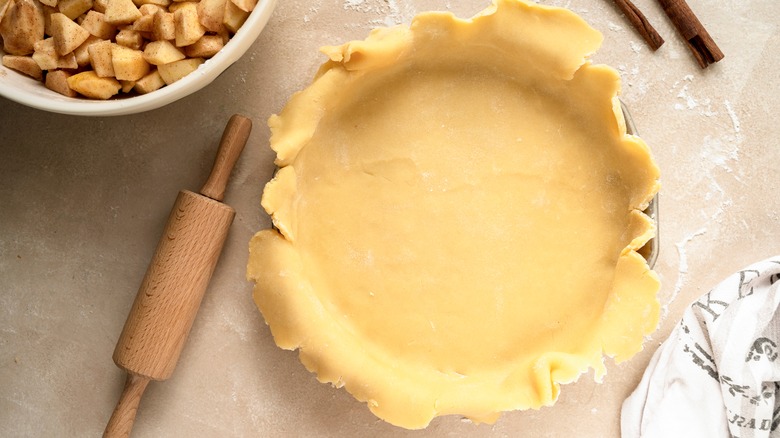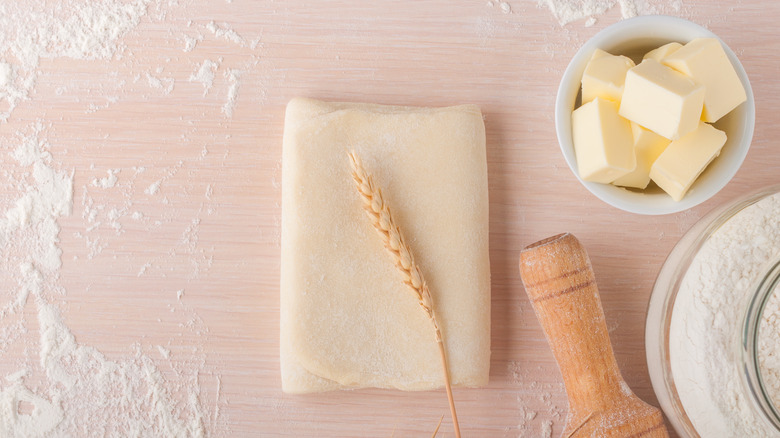Why You Should Consider Laminating Your Pie Dough
A well-baked crust can make or break a pie. Not only does the crust help to transport the filling, but it also adds its own flavor and texture. If you're someone who has trouble making a flavorsome and flaky pie crust every time, then you should definitely try laminating your pie dough. It also makes a great next step for anyone who feels they've already mastered the basic pie dough and wants to try something new.
Typically when talking about a laminated dough, it's usually in reference to puffy pastries like croissants, danishes, or Kouign-Amann. For those that don't know, The Culinary Pro explains that laminating is done by layering butter or any other fat in between thin layers of dough. As the fats melt, they give off steam, which is then trapped in between the dough. This gives it a lift and creates the beautifully light and flaky texture associated with pastries. Baking Bites also notes that the milk solids help the pastry to brown. This process requires many turns and folds of the pastry to create a super light dough, but the perfect pie crust won't take half as much work.
How to laminate pie dough
For laminated pie dough, there isn't a need to roll the butter in between each layer of your dough. According to King Arthur Baking Company, all that you need to do is include lots of fat in your mix, and then give it a simple fold. Yahoo News also notes it's important to work with chilled pie dough, so make sure it has spent some time in the fridge before you get started. Roll the pie dough out into an 8- x 10-inch rectangle. Then fold the dough over itself in thirds like a letter going into an envelope. Then, flip the dough, rotate it 90 degrees, and repeat the process of rolling it out and folding it. Finally, wrap the dough in plastic, and refrigerate it for at least 30 minutes before using it.
While fats other than butter can work in this recipe, King Arthur does recommend it for its high water content which provides the most steam while baking. This will give the dough the most lift, and the best color while it bakes. Bon Appétit also recommends using a recipe that contains more butter than your standard pie crust. Again, more butter means more flavor, more steam, and the best, flakiest pie crust.

